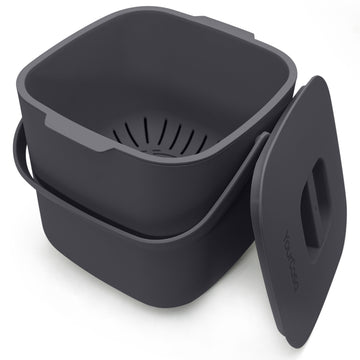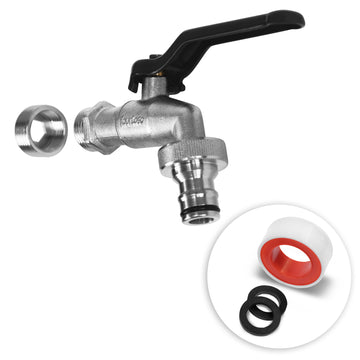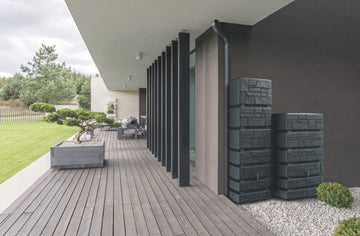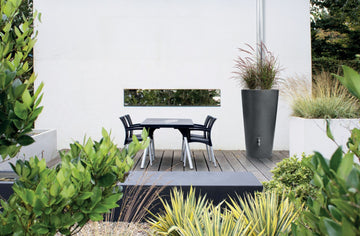How to avoid mosquitoes, algae and other pests in your rain barrel
by Robert Zielinski on Jul 08, 2024
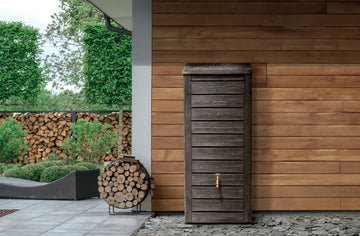
Rain barrels are a real blessing for your own garden . Fresh, soft rainwater is not only good for the plants, but also reduces the burden on the environment and your wallet. Unfortunately, even a rain barrel cannot survive without maintenance.
Standing water can quickly become a paradise for mosquitoes, algae and other pests that are not only annoying but can also be harmful to your plants and your health. In this blog post, we'll tell you what you can do about mosquitoes in your rain barrel and how to keep it free of other uninvited guests.
With our simple measures, you can ensure that the collected rainwater is always available in the best quality for watering your garden - for a blooming and healthy garden that delights you and your plants.
How to avoid pests in your rain barrel? Keep the lid closed at all times to prevent mosquitoes from laying eggs. Use a fine mesh net to keep out leaves and insects. Clean the barrel regularly with water and vinegar to remove algae and debris. Add a piece of copper pipe to inhibit algae growth. Empty the barrel completely every few weeks to keep the water fresh. Use biodegradable products to keep the water pest-free without harming the environment.
Why are rain barrels often full of mosquito larvae?
Unfortunately, mosquito larvae in rain barrels are not uncommon. The barrels provide ideal conditions for the pests . Mosquitoes prefer to lay their eggs in calm, still waters, as these provide a safe environment for the larvae to develop. This leads to a rapid proliferation of the mosquito population.
Mosquitoes are not only annoying, but can also transmit diseases through their bites . Although there is no dengue fever or malaria in Germany, there have been cases of the West Nile virus in Germany, for example.
By properly caring for and covering your rain barrel, you can effectively prevent mosquito larvae from settling there and multiplying. Fine-mesh nets, for example, prevent mosquitoes from laying their larvae in the water.
How can I prevent mosquito larvae in the rain barrel?
The most important thing is to cover your rain barrel well . Rain barrel accessories such as a tight-fitting lid or a fine-mesh net are ideal for preventing mosquitoes from laying their eggs in the barrel.
Additionally , regularly moving the water surface can help, as mosquito larvae prefer stagnant water. Simple measures such as stirring the water or using a small pump that creates slight movement can effectively disrupt the development of larvae.
Which natural remedies help against mosquito larvae in the rain barrel?
A thin layer of vegetable oil on the water surface can prevent mosquito larvae in the rain barrel from breathing. It seals the surface and suffocates the larvae. Biodegradable dishwashing liquid is another effective method: a few drops in the water reduce the surface tension, causing the larvae to sink and drown.
There are also special preparations against mosquito larvae that are safe and environmentally friendly. For example, BTI tablets containing Bacillus thuringiensis israelensis can be put in the barrel and thus keep your rain barrels clean. They kill the larvae without harming other animals or plants.
| Medium | Ingredients | Application |
| Vegetable oil | Natural vegetable oil | Pour thinly onto the water surface |
| Dishwashing liquid | Surfactants | Add a few drops to the water |
| BTI tablets | Bacillus thuringiensis israelensis | One tablet per 50 litres of water |

Are algae in the rain barrel a problem?
Mosquitoes are not the only problem that rain barrel owners often encounter, but also algae. Algae make the water cloudy and unusable for watering your garden, as they absorb nutrients that should actually benefit your plants. Algae can also disrupt the process of rainwater harvesting by clogging filters and pipes.
Some types of algae even release toxic substances that can cause skin irritation or allergic reactions. In addition, algae provide an ideal environment for bacterial growth, which further worsens water quality. The following harmful types of algae are often found in rain barrels:
| Algae species | Toxins | Health risks |
| Blue-green algae (cyanobacteria) | Microcystins, anatoxins | Skin irritation, nausea, liver and nerve damage |
| Green algae (Chlorophyta) | No significant toxins | No significant risks, but can clog filters and promote bacterial growth |
| Red algae (Rhodophyta) | Non-toxic, but irritating | Skin irritation on contact, may promote bacterial growth |
| Diatoms | Domoic acid | Neurotoxic effects at high concentrations |
How can I effectively remove algae from the rain barrel?
Some algae are quite stubborn and difficult to remove. However, you can get rid of most algae in your rain barrel by scraping it off and filtering the water. A sharp scraper or brush will help loosen stubborn algae from the inside walls of the barrel. After scraping, you can pour the water through a fine mesh or filter to remove any remaining algae particles.
Home remedies such as vinegar and lemon juice are also effective against algae. Add a few cups of vinegar or the juice of several lemons to the water and let it soak in before rinsing the barrel thoroughly.
If you clean your rain barrel regularly from the start, you can usually prevent algae growth. A regular cleaning cycle ensures that the water stays clean and no algae grows.
How can I prevent the formation of algae in the rain barrel?
In addition to regular cleaning, there are other tricks that can help to effectively prevent the growth of algae in the rain barrel . Firstly, you should cover your rain barrel, as mentioned above. A cover can prevent algae in the rain barrel, as it does not get much sun. Like all other plants, algae also need sunlight to grow.
Placing the rain barrel in the shade is another measure to reduce algae growth, as less direct sunlight falls on the water.
Plants in the water can also help prevent algae because they absorb nutrients and thereby inhibit algae growth . Duckweed or water lilies in the water are particularly useful.
What other pests can attack my rain barrel and how do I prevent it?
In addition to mosquito larvae , other pests such as aphids and snails can also appear in and around rain barrels. Aphids are often attracted to moist environments and can settle on the plants near the barrel, while snails prefer a moist environment and organic material.
To prevent the appearance of these pests, it is important to regularly remove leaves and organic material from the rain barrel . These materials provide nutrients and hiding places for pests. Keep the area around the barrel clean and free of dead plant debris. A fine-mesh net over the barrel can prevent leaves and other organic matter from entering the water.
Natural enemies such as frogs and dragonflies are also useful in pest control. Frogs eat snails and other small insects, while dragonfly larvae live in the water and prey on mosquito larvae and other pests. By making your garden more natural, you can attract these beneficial animals. A small pond near the rain barrel can attract frogs, while planting flowers that attract dragonflies can support their population.
| pest | Reasons for occurrence | Problems | Countermeasures |
| Mosquito larvae | Standing water | Disease carriers, annoying | Covering rain barrel, copper pipe, movement of water |
| Aphids | Humid environment, plants nearby | Plant damage, honeydew | Removal of leaves, natural enemies such as ladybirds |
| Snails | Humid environment, organic material | Plant damage | Keep the environment clean, natural enemies such as frogs |
| Algae | Sunlight, nutrients in water | Cloudy water, clogged filters | Cover of the rain barrel, vinegar/lemon juice, plants in the water |
| Ants | Humid environment, organic material | Pollution, plant damage | Removal of leaves, cleaning of the surrounding area |

How do I properly care for my rain barrel?
Finally, we would like to summarize how to properly care for your rain barrel. First of all, you should clean the barrel regularly to keep it in good condition and ensure that the collected rainwater stays clean. To do this, proceed as follows:
- Empty the bin when there is little water in it.
- Remove any residue, such as leaves or mud, and fight algae with a brush and a mixture of water and vinegar or lemon juice. These natural cleaners help kill algae and pests without harming the environment.
- Rinse the bin thoroughly before refilling it.
To ensure that your barrel does not break in winter, you should empty it completely before the first frost . Remove all residues and let it dry. If possible, store the barrel in a frost-free place or cover it well to protect it from the weather. This will prevent cracks and other damage and get your rain barrel ready for spring .
conclusion
Getting rid of annoying animals and plants in your rain barrel, or better yet, preventing them from nesting in your valuable water in the first place, requires a little care . All in all, however, the effort involved is limited.
If you clean your barrel thoroughly once a month , position it correctly and cover it well, almost all the work is done and you can keep your garden in perfect shape with soft water - and garden sustainably.
Is rainwater use already revolutionizing your garden ? Do you have any experiences or tips? Then let your friends and relatives know and actively help to save valuable rainwater.

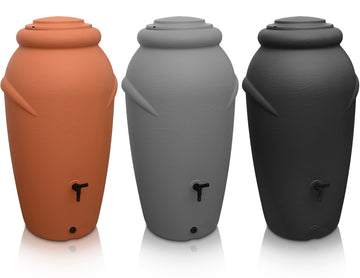
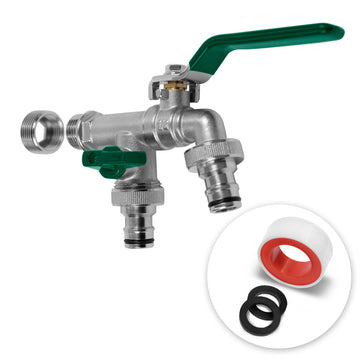
![Drei hohe YourCasa Regentonne 240 Liter [Wellen-Design] - Frostsicher & UV-beständige Gartentöpfe in den Farben Schwarz, Grau und Terrakotta, jeweils mit Drainagesystem für nachhaltige Bewässerung.](http://yourcasa.de/cdn/shop/files/ohnelogo_b8aeecac-557e-4106-a999-e77dcd160209.jpg?v=1707130230&width=360)
